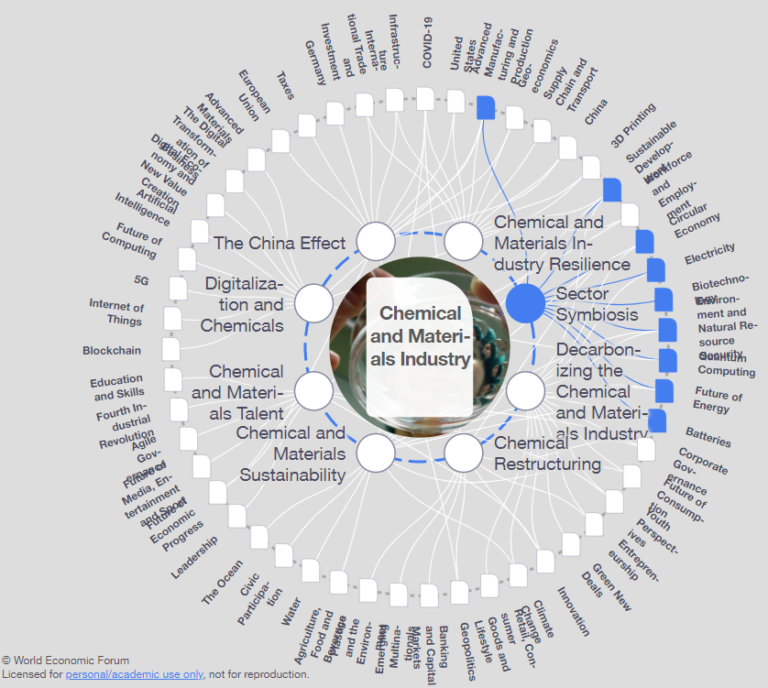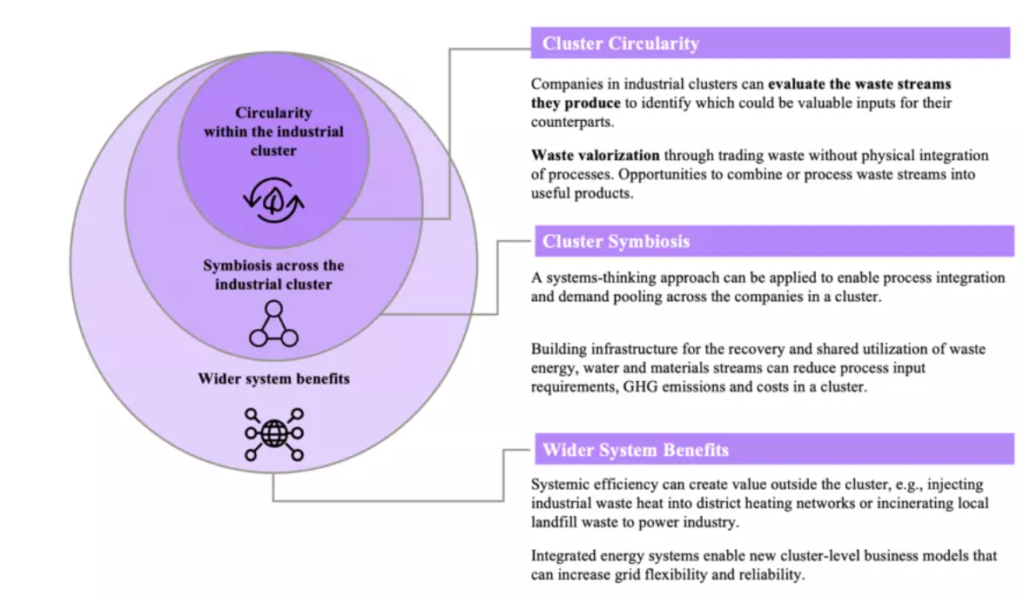Industrial symbiosis (IS) is a very efficient means to mitigate climate change and improve competitiveness. Industrial symbiosis was incorporated into EU law in 2018, and member states are now required to promote replicable practices of IS. It is also a key component of the EU’s Circular Economy Action Plan. The University of Oxford’s Centre for Research into Energy Demand Solutions identifies resource efficiency as the single biggest opportunity to mitigate climate change. A recent report by Accenture in collaboration with World Economic Forum – Industrial Clusters: Working Together To Achieve Net Zero – is a welcome addition to the discussion, particularly the content on systemic efficiency and circularity as this is the area where IS has most to contribute.
This report is also very timely; the share of global emissions caused by material production rose from 15% in 1995 to 23% in 2015. We are currently lobbying for IS to have its rightful place at COP26 in order to showcase how it can contribute to climate change mitigation.

In delivering industrial symbiosis, the identification of clusters is a challenge as often clusters are defined either as single-sector groupings or geographically co-located groupings (such as an industrial park or zone), neither of which is optimal for IS. Industrial symbiosis thrives on unconstrained geographic boundaries and cross-sector diversity; our data shows that for most sectors, 80% of IS transactions take place outside one’s own sector, with the only exception being construction which is still over 50%.
Even in a sector cluster situation, IS has a lot to offer should the members come together to implement an outward-facing IS strategy (including and diversifying the existing value chain to additional sectors). A cluster approach may still be limiting where a geography is defined by a hard boundary. At its best, applying eco-industrial park (EIP) principles supports and develops the local economy by identifying opportunities for the existing businesses to be more resource and energy-efficient. Often the solutions to resource issues (the right company, technologies, quantities and innovation, for example) are simply not available within close geographic proximity. With the obvious exception of waste heat, most resources will travel tens or hundreds of miles for a synergy; the economics of the resource (precious metal content in a waste flow, for example) will determine the viability of that solution.

The greatest contribution industrial symbiosis can make towards helping clusters achieve net zero is perhaps the inclusive, cross-sector engagement strategy at its core that not only delivers short, medium and long-term benefits but also creates the conditions for further innovation. In addition, by engaging industry in a holistic manner it provides an opportunity to introduce other reenforcing circular economy solutions whilst delivering an immediate contribution to net-zero ambitions.

